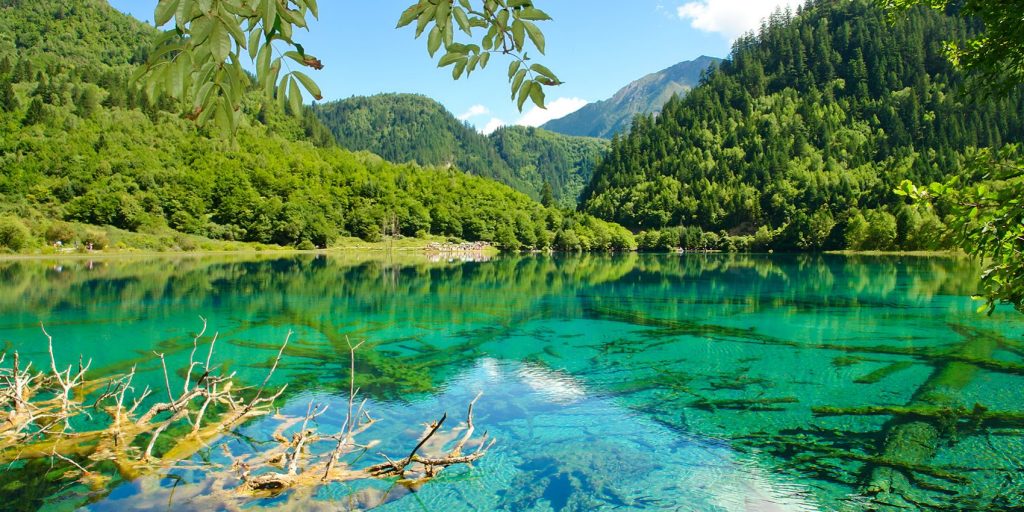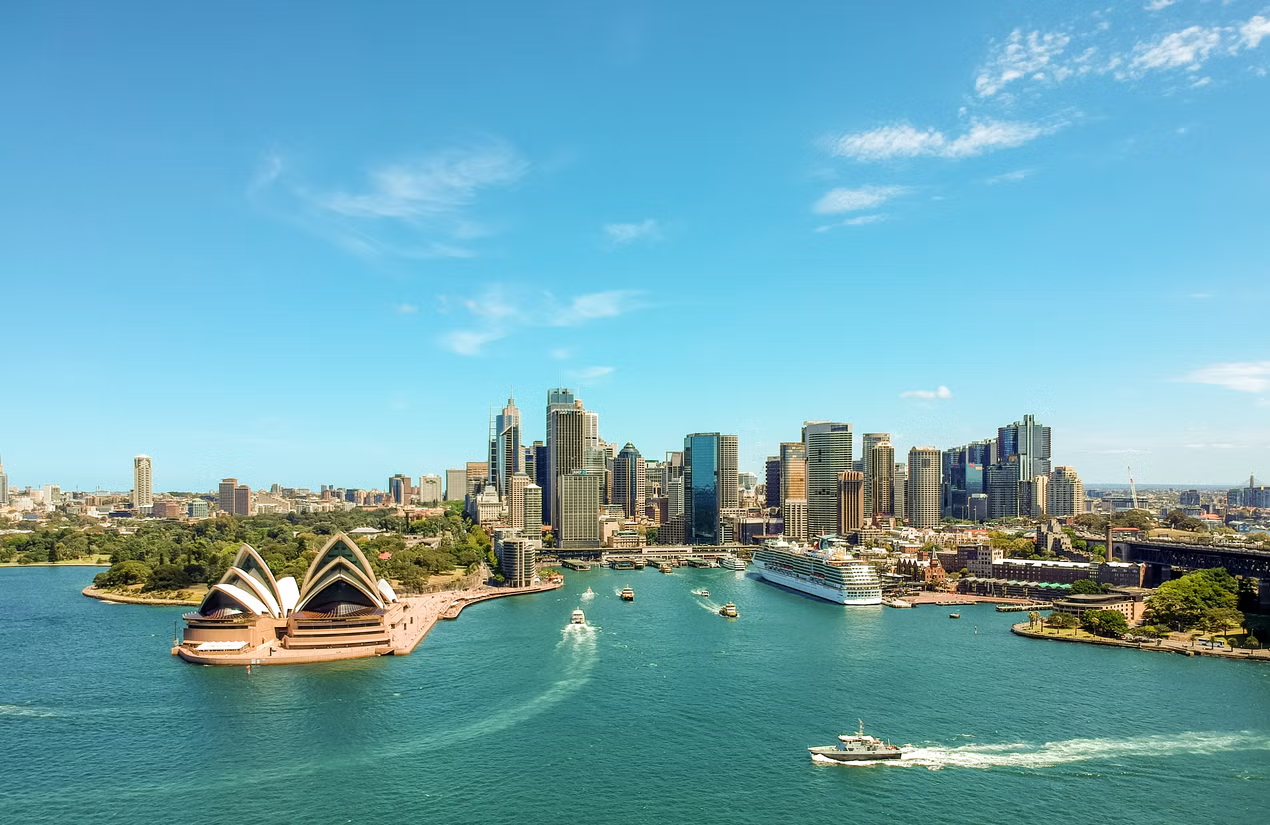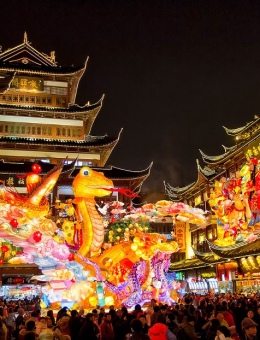Set in the northern part of Sichuan Province, China, Jiuzhaigou is often called a slice of paradise on earth. Its pristine lakes, tumbling waterfalls, primeval forests, and rich ecosystems make it a dream destination for nature lovers seeking calm, renewal, and awe-inspiring scenery.
When Is the Best Time to Visit Jiuzhaigou?

Choosing the right season will shape your entire experience. Jiuzhaigou has four distinct seasons, each with its own character and charm.
1. Spring in Jiuzhaigou (March–May)
Spring arrives with budding leaves and blossoms. This is a wonderful time to see peach and pear flowers blooming throughout the valleys. Crisp air and comfortable temperatures make walks relaxing, while vigorous waterfalls and jade-green lakes paint a gentle, romantic scene you will not soon forget.
2. Summer in Jiuzhaigou (June–August)
If you want to escape the heat, summer is ideal. Lush forests and glass-clear lakes create a refreshing atmosphere. It is also a good season for picnics, light treks, and encounters with vibrant wild nature.
3. Autumn in Jiuzhaigou (September–November)
Autumn is the peak season. Forests blaze with golds and reds, and the lakes mirror the mountains’ colors in spectacular fashion. It is a prime time for photography, with light and foliage combining to create postcard-worthy views.
4. Winter in Jiuzhaigou (December–February)
Winter transforms Jiuzhaigou into a tranquil, otherworldly realm. Snow blankets the valleys and ice forms on lakes, lending an air of mystery. Travelers who prefer quiet paths and a slower pace will appreciate the serenity of the season.
Jiuzhaigou Ticket Prices
Admission varies by season. During the high season (April–November), tickets typically range from about 200 to 300 CNY. In the low season (December–March), prices generally drop to around 100 CNY. A separate on-site shuttle fee of roughly 90–100 CNY applies for moving between attractions inside the park. To save money, consider booking early and checking any current concessions or policies.
What Makes Jiuzhaigou Special?
The scenic area is arranged around three main valleys: Shuzheng, Zechawa, and Rize. Each offers signature landscapes and distinct experiences.
I. Shuzheng Valley
Bonsai Shoal
Just beyond He Ye Village at the valley entrance lies a shallow, tree-studded lake where poplars, rhododendrons, pines, cypresses, and willows weave a multihued tapestry. From above, the water garden resembles an immense natural bonsai. To protect this fragile habitat, walking on the lakebed is prohibited; viewing from designated platforms preserves both safety and the site’s unspoiled beauty.
Shuzheng Waterfall
The smallest of the area’s four well-known waterfalls sits on the approach to Shuzheng Village. Fed by upstream lakes, streams split and reunite before spilling over the lip like a delicate beaded curtain. The fall’s soft, graceful flow sets a lyrical tone for the day’s exploration.
Reed Lake
The first lake after Bonsai Shoal blends marsh and open water. Swaying grasses ripple in the breeze, creating a soothing, whispering soundtrack. It is an inviting stop for quiet contemplation amid gentle greens and reflected sky.
Double-Dragon Lake
Tucked behind leafy canopies and bright cascades, this lake is famed for two pale rock ridges on its bed, curving like twin dragons beneath the clear surface. With luck, you may also spot swans gliding across the water, adding to the scene’s dreamlike calm.
Shuzheng Village
The largest and liveliest of the area’s nine Tibetan villages, Shuzheng is home to over 400 residents—nearly half of Jiuzhaigou’s population. Its standout landmark is a cluster of nine white stupas, known as the Lotus Bodhi Stupas, symbolizing the unity of nine Tibetan clans and their shared hopes for lasting prosperity.
Local specialties—from yak jerky to dried fruits and handcrafts—offer a taste of the region’s culture and make meaningful keepsakes of your journey.
Fire-Flower Lake
Nestled between Double-Dragon Lake and Five-Dragon Lake, this deep emerald pool gleams like a gemstone amid dense forest. On clear mornings, shafts of sunlight dance across the still surface like tiny flames, creating a shimmering, ethereal spectacle that captivates visitors.
II. Zechawa Valley
Long Lake
The largest and deepest lake in Jiuzhaigou rests at an elevation of about 3,101 meters. Crescent-shaped and ringed by snow-dusted peaks, it is a vast, quiet mirror with no visible outlet to other lakes. The scale and stillness here leave a powerful impression.
Five-Color Lake
Modest in size but dazzling in effect, Five-Color Lake shifts hues with light and viewpoint—jade, turquoise, saffron, even vivid greens—thanks to mineral content, aquatic vegetation, and extraordinary clarity. It is a can’t-miss stop for anyone drawn to natural color play.
Seasonal Lake
This lake’s allure changes with the calendar. In the rainy season, it becomes a pristine mirror reflecting mountains and sky; in the dry season, receding waters reveal a carpet of bright green grasses. Both moods highlight Jiuzhaigou’s delicate balance between vitality and calm.
III. Rize Valley
Five-Flower Lake
Five-Flower Lake is an icon of Jiuzhaigou. Crystal water reveals submerged logs, algae, and lichens that, together with minerals, produce luminous blues, greens, yellows, and occasional reds. In autumn, surrounding forests blaze with color, and the mirrored surface becomes a living canvas.
Pearl Shoal Waterfall
This broad, slanted cascade—about 200 meters wide with a 40-meter descent—fans out over a limestone shoal, its endless threads creating a lively natural chorus. The waterfall is also famous for featuring in a beloved classic TV adaptation of Journey to the West, adding a touch of cultural nostalgia to its raw power.
Pairing Jiuzhaigou with Nearby Highlights
Many travelers combine Jiuzhaigou with a stop in Chengdu, one of China’s most vibrant cultural cities. A popular side trip from Chengdu is the Leshan Giant Buddha, the world’s largest seated stone Buddha. Classic old towns such as Songpan and the quaint alleys of Jinli Old Street offer a window into regional heritage and traditional flavors, rounding out an itinerary that blends epic scenery with living culture.
Practical Notes at a Glance
- Seasons: Spring for blossoms and fresh greens; summer for cool forests; autumn for peak foliage and reflections; winter for quiet snowy vistas.
- Tickets: Approx. 200–300 CNY in high season; around 100 CNY in low season; internal shuttle about 90–100 CNY.
- Top Areas: Shuzheng, Zechawa, and Rize valleys—each with signature lakes and waterfalls.
- Photo Favorites: Five-Flower Lake, Five-Color Lake, Pearl Shoal Waterfall, Long Lake.
- Cultural Stops: Tibetan villages such as Shuzheng; day trips to Chengdu and Leshan for history and cuisine.
Whether you come for the flaming autumn colors, the sparkling blues of summer lakes, the blossoms of spring, or the hushed beauty of winter snow, Jiuzhaigou rewards unhurried exploration and a keen eye for detail. Plan your season, pace your days, and let the valleys reveal their magic, one clear pool and whispering forest at a time.










